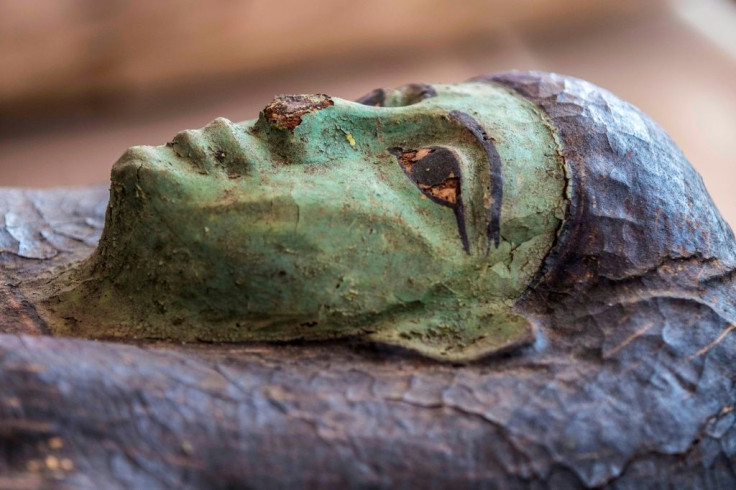4,300-Year-Old Gold-Covered Mummy Found In Egypt

KEY POINTS
- The 4,300-year-old gold leaf-covered mummy was found inside a 15-meter-deep burial shaft
- Several tombs also contained the remains of a priest, a writer and a secret keeper
- Numerous remains of unidentified individuals were also found
Archaeologists have uncovered a 4,300-year-old gold leaf-covered mummy inside a sarcophagus near Egypt's capital, reports said.
The mummy was found inside a 15-meter-deep burial shaft Saqqara, Egypt where three other tombs dating back to the Fifth and Sixth dynasties of the Old Kingdom (2686-2181 B.C.) were also found, according to ABC News.
The remains inside the mummy reportedly belonged to a man named Hekashepes and are assumed to be one of the oldest and most complete non-royal corpses ever found in Egypt.
"This mummy may be the oldest and most complete mummy found in Egypt to date," Egyptologist Zahi Hawass said, as quoted by ABC News.
Hawass said that among other tombs–and the most important one–found belonged to Khnumdjedef, an inspector of officials, a supervisor of nobles and a priest during the reign of Unas, last pharaoh of the fifth dynasty. The tomb was reportedly decorated with scenes of daily life.
Another tomb belonged to a "secret keeper" name Meri.
"The second largest tomb belonged to Meri, who held many important titles, such as keeper of the secrets and assistant of the great leader of the palace."
Numerous statues of unidentified individuals were also found including one representing a couple and several servants.
The team also reportedly found the remains of a judge and writer named Fetek along with several statues in another tomb.
"This discovery is so important as it connects the kings with the people living around them," Ali Abu Deshish, another archaeologist involved in the excavation, said, as quoted by BBC.
Saqqara is one of the most important cemeteries of Memphis, according to Egypt's Ministry of Tourism and Antiquities. It has been hailed as one of the most important cities in ancient Egyptian history and has been designated as a world heritage site.
The village is also home to several pyramids including the Step Pyramid of Djoser (c.2686–2667 BC) where recent discoveries were found.

© Copyright IBTimes 2024. All rights reserved.





















